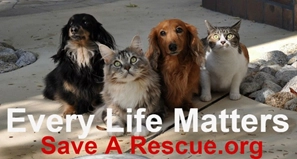#1 Pets Dehydrate More Quickly than People- Dogs can get dehydrated quickly,. So, give them plenty of fresh, clean water when it’s hot or humid outdoors. Make sure your dogs have a shady place to get out of the sun, be careful not to over-exercise them, and keep them indoors when it’s extremely hot. Dogs with darker coats absorb more heat than lighter coats. Also, overweight dogs are at higher risk of dehydration. Have your dog carry a water bottle in a backpack or a vest- the water in the bottles will keep the dog cooler and give the dog a sense of purpose.
#2 Recognize Pet Over-Heating Symptoms- They include excessive panting or difficulty breathing, increased heart and respiratory rate, drooling, mild weakness, stupor or even collapse. Symptoms can also include seizures, bloody diarrhea and vomit along with an elevated body temperature of over 104 degrees. Dogs cool from the bottom up. Make sure to spray water on the paws and stomach, not just the top of the dog. A wet towel does more good on the bottom of your dog than when laid on the top of its coat.
#3 Flat Faced Breeds Have Sensitive Respiratory Systems- Dog breeds with flat faces, like Pugs, Boston Terriers, French Bulldogs, and even cats such as Persians, are more susceptible to heat stroke since they cannot pant as effectively. Dogs and cats should be kept cool in air-conditioned rooms as much as possible.
#4 Never Leave Dogs in Parked Cars in – Vehicles heat up very quickly and retain the heat even in the shade. Plus, a dog may get overexcited in the car due to passersby or panic from claustrophobia, making them more likely to dehydrate. On longer trips, make sure you have water for your pets and keep the car AC running.
#5 Swimming Pools and Life Jackets on Boats- Do not leave dogs unsupervised around a pool. Introduce your dogs to water gradually; show them where the ‘steps’ for exiting the pool are and make sure they wear flotation devices when on boats. Rinse your dog off after swimming to remove chlorine/ salt from his fur and don’t let your dog drink pool water, which contains chlorine and other chemicals.
#6 Short Summer Coats and Sunscreens- Trim longer hair on your dog but never shave your dog: the layers of dogs’ coats protect them from overheating and sunburn. Brushing cats more often than usual can prevent problems caused by excessive heat. Make sure that any sunscreen or insect repellent product you use on your dogs is labeled specifically for use on animals. Also, white dogs suffer from sun burns and skin cancer and need sun screen.
#7 Hot Sidewalks and Asphalt- When the temperature is very high, don’t let your dog linger on hot asphalt. Being so close to the ground, your pooch’s body can heat up quickly, and the sensitive paw pads can burn. Keep walks to a minimum. Some pet owners resort to ‘doggie booties’ to protect their dog’s feet from the hot asphalt.
#8 Citronella Candles, Insecticides, Rodent Poisons, and BBQ foods- Commonly used lawn and garden insecticides can be harmful to cats and dogs if ingested, so keep them out of reach. Also, make sure that your dogs are far away from citronella candles, tiki torch products, and insect coils. Keep alcoholic beverages away from dogs, as they can cause intoxication, depression, and comas. Similarly, remember that the snacks enjoyed by your human friends should not be a treat for your pet.
#9 Exercise your Dog Early in the Morning/Late at Night- These cooler times will make the walk more comfortable for both you and your dog. Exercising is great for healthy dogs except summer is time to reduce exercise intensity.
#10 Innovative ways to Cool Your Dog:
- Wet a face cloth and freeze it in your refrigerator freezer. Give to them to chew on.
- Wet an old towel and leave on the deck for them to lay on.
- Kiddy pool full of water they can safely lay in.
- Let your dog dig! Your dog may resort to finding his own way to avoid the heat. Dogs dig their dens not out of frustration but to find food, hide, give birth, or keep cool! If possible, locate a shady area where it’s okay for your dog to dig.










